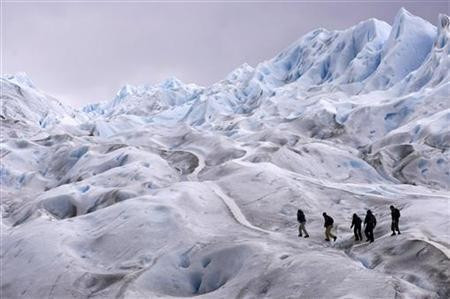Karakoram Glaciers Growing Thicker; Defy Global Warming Trends

Defying the global trends of adverse climatic change that has resulted in the melting of glaciers worldwide, new reports and satellite photos have indicated that the glaciers in the mountainous region of the Himalayas has expanded and grown thicker during the last decade.
These glaciers in Asia's Karakoram Range that lies between the borders of Pakistan, India and China have increased in thickness at a time when glaciers in other parts of the world are losing mass.
The findings have amazed researchers across the globe; who are now trying to understand the reason behind this unusual phenomenon.
As per earlier reports, rising global temperatures has led to the melting of glaciers and ice caps and has caused early ice thaw on rivers and lakes.
According to Nasa, the polar ice cap is now melting at the alarming rate of nine percent per decade. Arctic ice thickness has decreased 40 percent since the 1960s. Apart from this, authors of the Intergovernmental Panel on Climate Change (IPCC) Fourth Assessment Report have found that on average, mountain glaciers and snow cover had decreased in both the northern and southern hemispheres.
The current findings are therefore regarded as a welcome respite at a time when glaciers across the globe are shrinking at a rapid rate.
The Karakoram Range, although included in the Himalayas, is technically a separate chain that has been, till date inaccessible. As such, the region's glaciers are poorly studied and there has been a general recognition that observations need to be stepped up in order to clarify what is going on.
The Daily Mail reported that the researchers are unsure why the region bucks the global trend - but they know from other studies in other parts of the world that in very cold regions, like the Karakoram Range, climate change can cause extra precipitation, which then freezes and adds to ice mass.
Additionally, unlike other glaciers, the Karakoram glaciers are covered with thick layers of rock debris. This implies that their melting patterns and mass gains are dependent on factors like changes in that debris apart from change in the climate.
"We don't really know the reason. Right now we believe that it could be due to a very specific regional climate over Karakoram because there have been meteorological measurements showing increased winter precipitation; but that's just a guess at this stage," BBC quoted lead researcher Julie Gardelle saying.
The scientists from the National Centre for Scientific Research and the University of Grenoble, who have worked on the research, have released their report findings in the current edition of the Nature Geoscience journal.
© Copyright IBTimes 2024. All rights reserved.






















